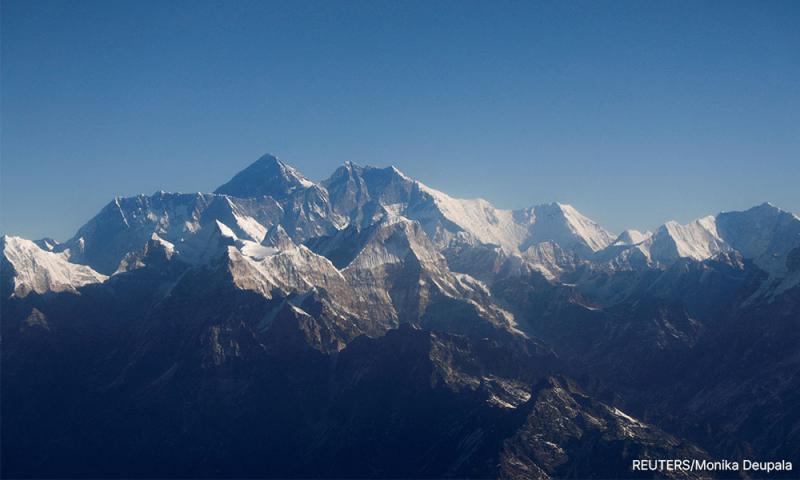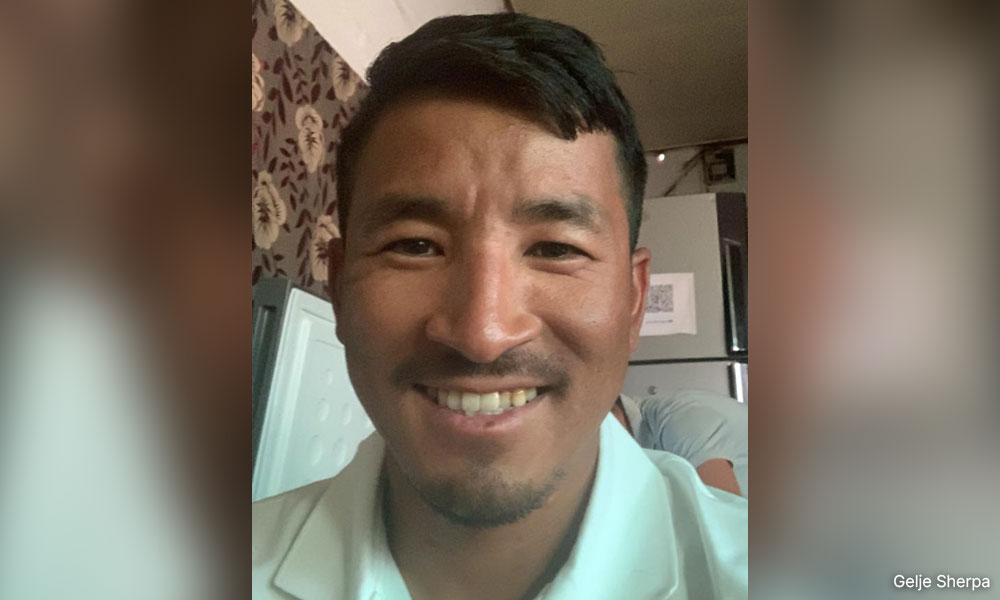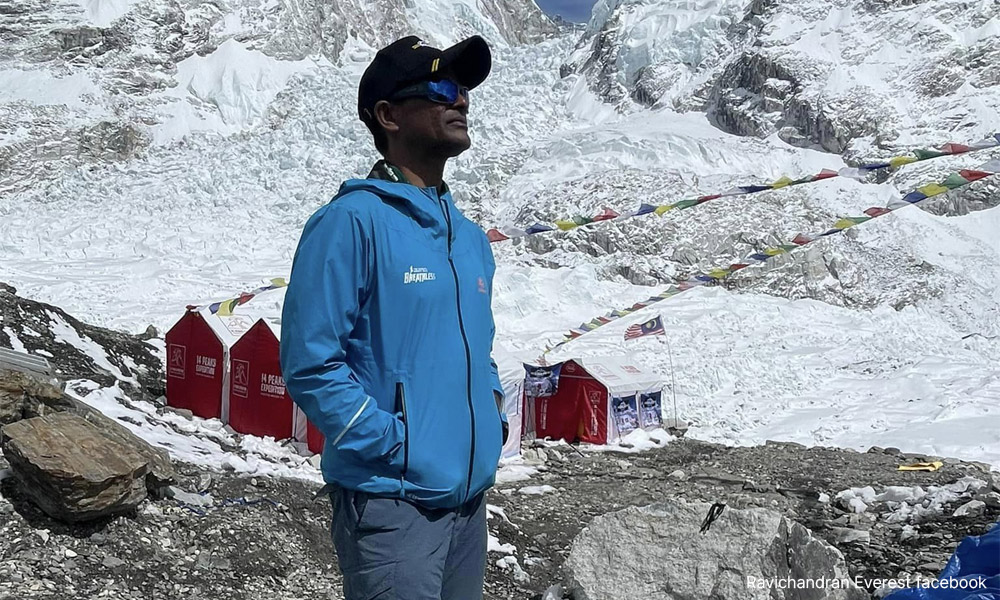
Sherpa downplays mountaineer's 'late thank you' as misunderstanding
Mount Everest recently became the backdrop for mounting controversy sparked by a delayed expression of gratitude by Malaysian climber T Ravichandran, who was saved from “death’s door”, to his rescuer.
Stepping forward to shed light on the situation, his rescuer, Gelje Sherpa, attributed the controversy to a simple misunderstanding that gained unwarranted attention.
Without going into details, Gelje, 30, told Malaysiakini in a phone interview: “We are friends and we message each other regularly.
“He texted me and called me personally from Malaysia to thank me. We couldn’t meet each other after the rescue because I was still at Everest and he was in Kathmandu but he thanked me,” he said.
Gelje’s heroic rescue gained viral attention in late May and was extensively covered by international media.
However, Malaysians took offence on Gelje’s behalf when Ravichandran failed to mention his rescuer in any of his interviews or social media posts upon his return home.

Gelje Sherpa
Mountaineer Ravichandran, 58, who conquered Everest three times but lost eight fingers to frostbite during these expeditions, faced criticism for omitting Gelje’s while thanking sponsors, rescue insurance, and partner organisations.
While Ravichandran was accused of blocking comments and Gelje’s Instagram account, the sherpa chalked up the events as a misunderstanding and added that “everything is okay”.
Ravichandran had planned to conquer Mount Lhotse - the world’s fourth-highest mountain - within 24 hours of summiting Everest, but he ran into difficulties while descending.
Ravichandran called the ordeal a “humbling experience” and pleaded for patience from Malaysians to help him get past the incident.
Gruelling rescue above 8,400m
The 1.6m-tall Nepali guide of Sherpa ethnicity reportedly found Ravichandran, 58, in distress at the “death zone”, a few hundred metres from the peak, where freezing temperatures and low oxygen heighten the risk of altitude sickness.
Gelje, who weighed 59kg and carried 6kg of gear, then hauled Ravichandran - who weighed more than 80kg including gear - on his back.
“It was difficult because I had to bring him down from the balcony,” he said, referring to where the highest weather station on earth (Balcony Station) sits at approximately 8,430m.
“I carried him down about 600m but it was very hard because it was from an area above 8,000m,” he said, reliving the difficulties despite having done about 50 rescues in his 11 years as a mountaineering guide.
Mountaineer Ravichandran, 58, who conquered Everest three times but lost eight fingers to frostbite during these expeditions, faced criticism for omitting Gelje’s while thanking sponsors, rescue insurance, and partner organisations.
While Ravichandran was accused of blocking comments and Gelje’s Instagram account, the sherpa chalked up the events as a misunderstanding and added that “everything is okay”.
Ravichandran had planned to conquer Mount Lhotse - the world’s fourth-highest mountain - within 24 hours of summiting Everest, but he ran into difficulties while descending.
Ravichandran called the ordeal a “humbling experience” and pleaded for patience from Malaysians to help him get past the incident.
Gruelling rescue above 8,400m
The 1.6m-tall Nepali guide of Sherpa ethnicity reportedly found Ravichandran, 58, in distress at the “death zone”, a few hundred metres from the peak, where freezing temperatures and low oxygen heighten the risk of altitude sickness.
Gelje, who weighed 59kg and carried 6kg of gear, then hauled Ravichandran - who weighed more than 80kg including gear - on his back.
“It was difficult because I had to bring him down from the balcony,” he said, referring to where the highest weather station on earth (Balcony Station) sits at approximately 8,430m.
“I carried him down about 600m but it was very hard because it was from an area above 8,000m,” he said, reliving the difficulties despite having done about 50 rescues in his 11 years as a mountaineering guide.

T Ravichandran
Gelje said he had enough oxygen bottles with him and was able to share them with Ravichandran because he and his client, a Chinese climber, had not reached the peak yet and therefore had not depleted their supply.
In an interview with AFP, Gelje said many climbers had passed Ravichandran without stopping to help as they prioritised their own survival.
He explained that Ravichandran had already spent 30 hours at altitudes above 8,000m and he and his sherpas had depleted their oxygen supply.
“I was met at Camp 4 by Ngima Tashi Sherpa, who helped me through the difficult terrain,” he explained.
Other sherpas who were part of the rescue the rest of the way were 14 Peaks Expedition members Ming Tenji Sherpa, Nima Dorchi Sherpa, Dawa Sherpa, Dipen Bhote, and base camp rescue coordinator Tashi Lakpa Sherpa, who is also the team expedition leader.
Gelje reportedly said that his Chinese client eventually understood that his guide was rescuing Ravichandran from imminent death and was keen to make a trip next year.
Meanwhile, the sherpa prepares for his next expedition up Mounts Gasherbrum 1 and 2 in Pakistan, in the coming days.
This has been one of Everest's deadliest seasons, with 12 people confirmed dead on expeditions and another five missing, and presumed dead.
Gelje said he had enough oxygen bottles with him and was able to share them with Ravichandran because he and his client, a Chinese climber, had not reached the peak yet and therefore had not depleted their supply.
In an interview with AFP, Gelje said many climbers had passed Ravichandran without stopping to help as they prioritised their own survival.
He explained that Ravichandran had already spent 30 hours at altitudes above 8,000m and he and his sherpas had depleted their oxygen supply.
“I was met at Camp 4 by Ngima Tashi Sherpa, who helped me through the difficult terrain,” he explained.
Other sherpas who were part of the rescue the rest of the way were 14 Peaks Expedition members Ming Tenji Sherpa, Nima Dorchi Sherpa, Dawa Sherpa, Dipen Bhote, and base camp rescue coordinator Tashi Lakpa Sherpa, who is also the team expedition leader.
Gelje reportedly said that his Chinese client eventually understood that his guide was rescuing Ravichandran from imminent death and was keen to make a trip next year.
Meanwhile, the sherpa prepares for his next expedition up Mounts Gasherbrum 1 and 2 in Pakistan, in the coming days.
This has been one of Everest's deadliest seasons, with 12 people confirmed dead on expeditions and another five missing, and presumed dead.
No comments:
Post a Comment